This article needs additional citations for verification .(September 2016) |
An air mail facility is an installation for airmails of the United States.
This article needs additional citations for verification .(September 2016) |
An air mail facility is an installation for airmails of the United States.
With the establishment of the first air-mail route in 1918, and the later additional routes, plus the accepted use of premium-priced air mail by the public, it was only natural that the Railway Mail Service (RMS), being in charge of transit mail, was assigned the task of establishing air mail field (AMF) postal facilities at the major airports. Only outgoing air mail was distributed at these workrooms, channeled there by both the post offices and railway post office (RPO) routes. This mail was distributed and dispatched to other AMFs via the different flight connections. Incoming mail from other AMFs was distributed by general scheme and pouched to outgoing RPOs and necessary post offices. The Motor Vehicle Service provided frequent trips between the city post office and the AMF for air mail ground transportation. In 1951, there were 1200 clerks manning forty AMFs.
AMF continue to exist within the U.S. Postal Service (USPS) and are now called air mail centers (AMC). [1]

A post office is a public facility and a retailer that provides mail services, such as accepting letters and parcels, providing post office boxes, and selling postage stamps, packaging, and stationery. Post offices may offer additional services, which vary by country. These include providing and accepting government forms, and processing government services and fees. The chief administrator of a post office is called a postmaster.
The Railway Mail Service of the United States Post Office Department was a significant mail transportation service in the US from the mid-19th century until the mid-20th century. The RMS, or its successor the Postal Transportation Service (PTS), carried the vast majority of letters and packages mailed in the United States from the 1890s until the 1960s.

A postmark is a postal marking made on an envelope, parcel, postcard or the like, indicating the place, date and time that the item was delivered into the care of a postal service, or sometimes indicating where and when received or in transit. Modern postmarks are often applied simultaneously with the cancellation or killer that marks postage stamps as having been used. Sometimes a postmark alone is used to cancel stamps, and the two terms are often used interchangeably. Postmarks may be applied by handstamp or machine, using methods such as rollers or inkjets, while digital postmarks are a recent innovation.

The United States Post Office Department was the predecessor of the United States Postal Service, in the form of a Cabinet department, officially from 1872 to 1971. It was headed by the postmaster general.

Postal history is the study of postal systems and how they operate and, or, the study of the use of postage stamps and covers and associated postal artifacts illustrating historical episodes in the development of postal systems. The term is attributed to Robson Lowe, a professional philatelist, stamp dealer and stamp auctioneer, who made the first organised study of the subject in the 1930s and described philatelists as "students of science", but postal historians as "students of humanity". More precisely, philatelists describe postal history as the study of rates, routes, markings, and means.
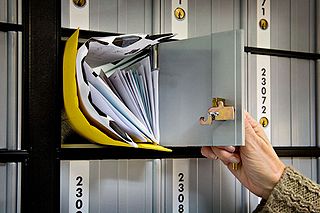
A post office box is a uniquely addressable lockable box located on the premises of a post office.
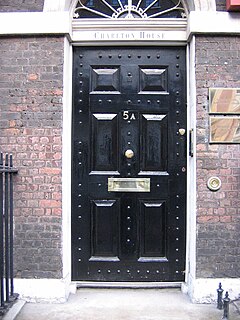
A letter box, letterbox, letter plate, letter hole, mail slot or mailbox is a receptacle for receiving incoming mail at a private residence or business. For outgoing mail, Post boxes are often used for depositing the mail for collection, although some letter boxes are also capable of holding outgoing mail for a carrier to pick up. Letterboxes or mailboxes use the following primary designs:
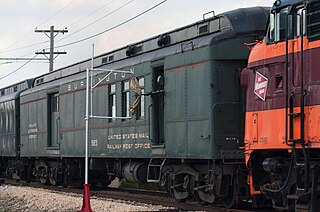
In Canada and the United States, a railway post office, commonly abbreviated as RPO, was a railroad car that was normally operated in passenger service as a means to sort mail en route, in order to speed delivery. The RPO was staffed by highly trained Railway Mail Service postal clerks, and was off-limits to the passengers on the train. In the UK and Ireland, the equivalent term was travelling post office (TPO).

A Travelling Post Office (TPO) was a type of mail train used in Great Britain and Ireland where the post was sorted en route.
The Railway Mail Service (RMS) Library is a major collection of materials pertaining to en route distribution history. Incorporated in May 2003, it can assist researchers interested in Railway Mail Service, route agent, Seapost, Railway Post Office (RPO), and Highway Post Office (HPO) history. The collection has many unique, original-source documents that provide answers to questions dealing with the transportation and distribution of USA Mail between 1862 and 1977, as well as other countries during the 19th century and 20th century.
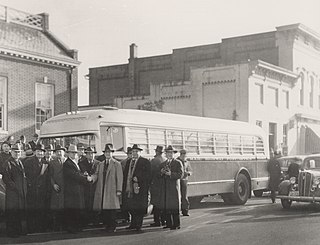
The term highway post office refers to brightly colored red, white and blue buses used to carry mail to multiple areas over wide distances.
Terminal railway post offices were sorting facilities which were established by the Railway Mail Service to speed the distribution of parcel post. These offices were usually located in or near railroad stations in major cities or junction points. Terminal railway post offices operated generally from 1913-1914 into the mid-1960s, before their function was absorbed by post office sectional centers.

From the 1880s until well into the 1950s, virtually all long-distance transportation of United States Mail was performed by the railroads. Specially equipped railway post office (RPO) cars were a part of most passenger trains, the cars staffed by highly trained railway postal clerks who sorted mail as the train sped along its route. The growth of this mail distribution network paralleled the expansion of the railroads, allowing mail to be exchanged between routes at junction points where two railroads crossed or shared passenger terminals.
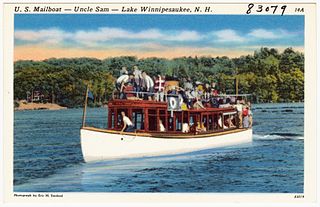
Post was transported over water in the United States in the later nineteenth and the twentieth century.
The Postal Transportation Service (PTS) was the renamed successor to the Railway Mail Service of the United States Post Office Department from 1 October 1949. Although this branch of the service had been in charge of all transit mail, some parts had little to do with railroads, even though they were still the most important part of the service. In 1950, of the 32,000 clerks assigned to the PTS, only about 16,000 actually worked on trains. The remainder were in terminals, transfer offices, Air Mail Facility, Highway Post Offices (HPO), administrative offices, etc. Boat Railway Post Office, Streetcar Railway Post Offices, and the Seapost Service had already been discontinued. The name of the Chief Clerk's office was changed to District Superintendent's office.
Streetcar railway post office (RPO) routes operated in several major USA cities between the 1890s and 1920s. The final route was in Baltimore, Maryland. The Mobile Post Office Society, Affiliate 64 of the American Philatelic Society, has published monographs detailing the operational history of each route.

Military mail, as opposed to civilian mail, refers to the postal services provided by armed forces that allow serving members to send and receive mail. Military mail systems are often subsidized to ensure that military mail does not cost the sender any more than normal domestic mail. In some cases, military personnel in a combat zone may post letters and packages to their home country free of charge. Modern military mail services are provided by most armed forces around the world. In some nations, individual service branches may run their own military mail program.

The Hannibal and St. Joseph Railroad was the first railroad to cross Missouri starting in Hannibal in the northeast and going to St. Joseph, Missouri, in the northwest. It is said to have carried the first letter to the Pony Express on April 3, 1860, from a train pulled behind the locomotive Missouri.

Mobile post offices deliver mail and other postal services through specially equipped vehicles, such as trucks and trains.

A catcher pouch was a mail bag used by railway post offices of the nineteenth century and the early twentieth century. Its use was limited to exchanges onto moving trains. The specially constructed catcher pouch was grabbed by the catcher mechanism in the passing railway car and the catcher pouch would release from the holding rings on the mail crane. This technique was known as "mail on the fly". Starting in the 1870s the use of this technique of the Railway Mail Service was an important issue in the United States. It was a popular technique and the backbone of the United States Postal Service through the 1930s.